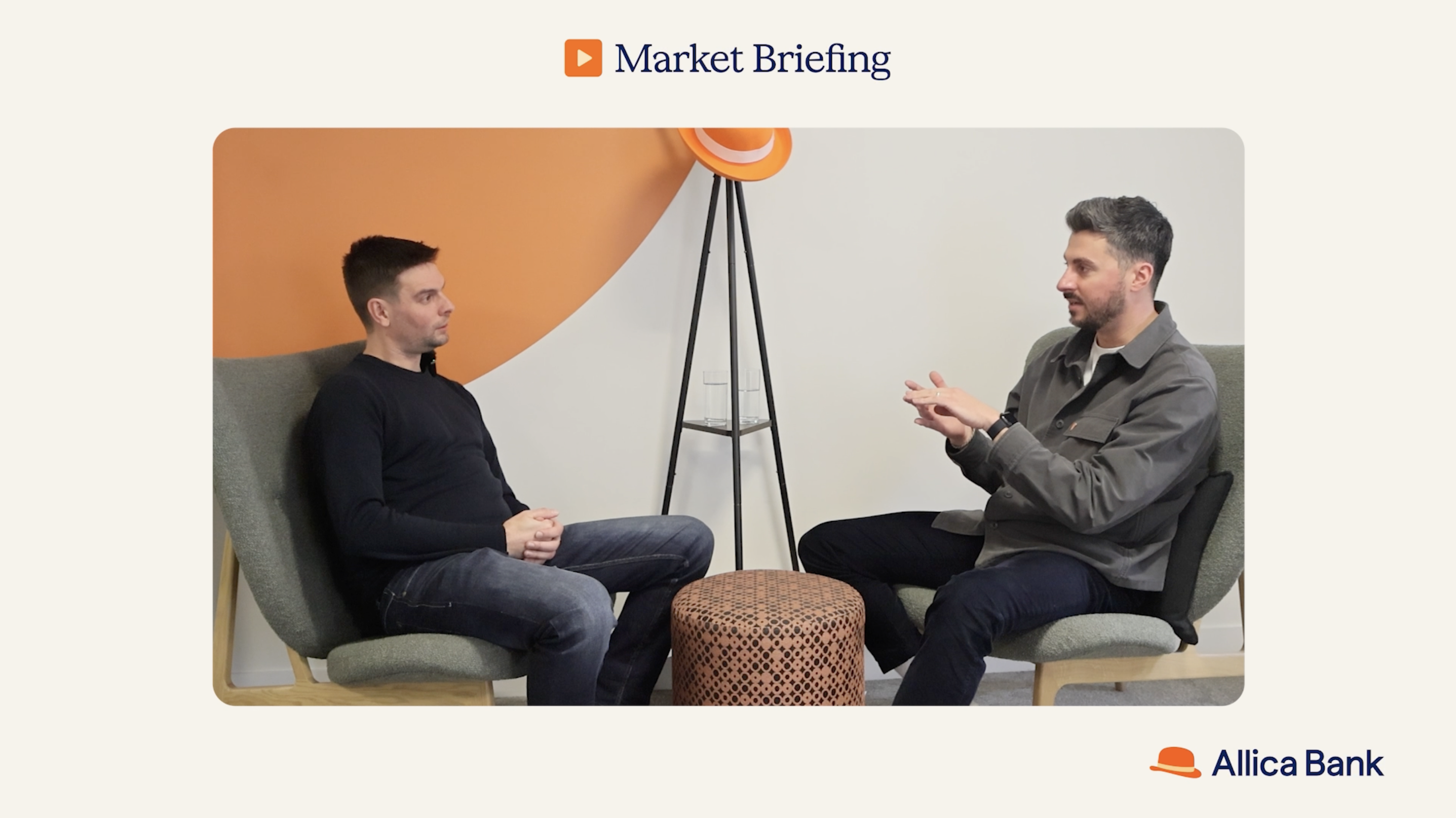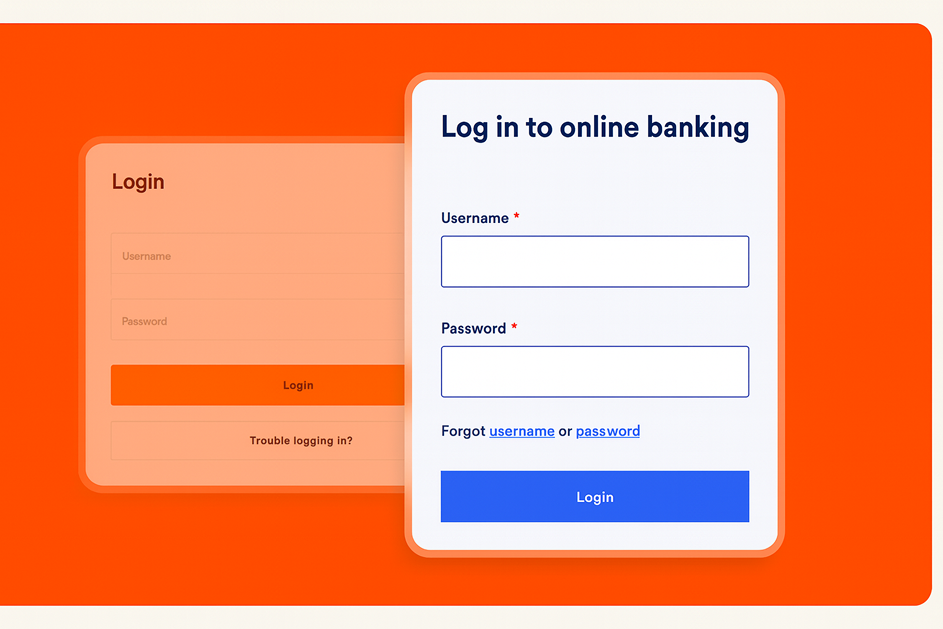2025 is shaping up to be a fascinating year - not without its challenges - for the established business community and the accountants who serve them.
Interest rates are elastic, remaining relatively high but with the potential for reductions later in the year. Costs are rising, especially for staffing. More businesses are looking for banking to provide deeper value and better financial returns.
We’re hearing from many of our accountancy partners that they’re working on broader client issues than ever before. This Market Briefing - hosted by Simon Lofts (Key Account Manager at Allica) and featuring Jim Leeves (co-founder of accountancy and marketing firm Shapes) - aims to address some of the biggest questions facing accountants in 2025.
Watch the YouTube video.
What's happening with interest rates?
Higher interest rates look like they’ll stick around for a little longer than some first thought. There’s speculation that we’ll see further cuts in the year ahead, but, Simon says, for now “there is a feeling that we’re going to see fewer reductions than we initially thought back in December.”
From Jim’s perspective, there are pros and cons. “If you do have the privilege of having reserves, then that money should be working for you in some way, shape or form.” Jim’s been working hard to get clients away from sitting on “the 0.01% of interest that people have been familiar with. There are banks that are offering a much better solution.”
“All too often, we’re seeing people come to us and they’re just not aware that there are better options out there in terms of making a return on their money. Being able to ask ‘Do you realise that you could have another £5,000 or £10,000 of interest this year?’ That's huge for people.”
Addressing staffing costs
Increased employer National Insurance contributions are now live and are proving a major hurdle for some businesses.
Jim referenced “a charity client who has a broad workforce with lots of people on part time hours. The increase, but particularly the reduction of the threshold to £5,000, is a huge, significant cost in a space that’s really squeezed anyway.”
“If you’re employing lots of people,” Jim said, “that impact is going to filter down. I think there’s going to be an inevitable impact on hiring, on potential redundancies for roles, but also a knock-on effect to inflation and what people charge for their services.”
“If you're looking to take on staff, you need to be looking at what you're charging and making sure that you're going to be okay, which could mean increasing your prices. Big businesses do this very, very well. They're normally ahead of the curve on that, and the squeeze comes at the bottom end.”
On that point, Jim discussed some of the ways his firm is helping clients address and reduce cost pressures.
Mitigating cost pressures
Jim is facing the issue of rising costs head-on with Shapes clients. “No doubt, you’ll have clients who are unsure or confused, who may need help with forecasting and understanding the impact. It might be that they’re not as worse off as they thought they might be. We have to make sure we’re having these conversations.”
Salary sacrifice
“One of the most popular options is salary sacrifice. It can be a nice, cost-effective way to save on tax. The knock-on effect, however, is less money rolling back around into the economy.”
Reviewing pricing
As mentioned earlier, Jim highlighted that “small businesses need to be thinking about their pricing all the time.” A huge value-add for accountants is to help clients build “a little confidence” to raise prices and move past the fear of “upsetting customers.”
Building reserves
Bringing it back to interest rates, Jim also noted that “people are happier to leave money in the business and give themselves opportunities down the line.” Saving these reserves in an interest-bearing account only acts as a further incentive.
Cost reviews
With costs rising, Jim thinks it’s important for accountants to be forensic about new costs in clients’ businesses. “If you’re going to introduce a new cost at any point, you need to know whether that pound you’re spending is generating a pound, at least, in return.”
Proactive accountants become business advisors
“Anyone can file a set of accounts nine months after year-end,” joked Jim. If you’re “live in your client’s data, which our tools allow, you have to be helping your clients proactively. Many accountants do that all the time, but we come across plenty of businesses where there’s been no advice.”
“I think the accounting profession has a huge challenge in advising this way.” As Jim sees it, the opportunity to be a valuable part of your clients’ business from day one.
“The traditional accounting approach has been making sure the taxes and accounts are right. Great, but 80 to 90% of what the business cares about is the future, not what’s already happened. When in front of clients, how much time do you spend talking about where the business is headed?”
Explaining further, Jim listed some of the areas he tries to look at with clients: “Where’s the vision, where’s the strategy? What’s the value to that business and exit plan, if there is one? What are the goals and have you got a rounded business approach? The accounting parts are crucial, but there’s more to it.”
Where banking can help you and your clients
Simon noted the news from Pay.UK that, for the second year running, current account switches (across personal and business accounts) exceeded one million. He referenced commentary that “these figures are ultimately being driven by increasingly money-conscious consumers”.
Jim was in full agreement. “Personally, I changed banks because one offered a few hundred pounds to do so. Changing our personal current accounts is quite common knowledge. In terms of business banking, there’s a real lack of awareness that it’s even possible.”
Interest rates, as discussed, are one of the obvious benefits of choosing a new bank. There’s also improved customer service, personal relationships, credit appetite and dozens of other reasons to switch to a new bank.
For accountants, creating a banking panel to share with clients is a quick and easy way to make a meaningful difference. Starting with a recommendation for a better banking service means “you could be in a position to add back even more than you're charging in fees - straight away in your engagement with that business.”
“The costs are really minor in comparison to the benefits you might get from a new bank.”
Prioritising freedom, relief and delight
There are lots more gems to uncover in the conversation, so you should take the time to watch the full video when you get the opportunity.
One of Jim’s closing points was especially resonant, when he talked about a driving force behind decisions they take in his firm.
“Can we as advisors bring a little bit more freedom for that business owner? Can we bring a little bit more relief, a little bit more delight to what they do?”
They might not make their way into your SLA, but relief and delight feel like great north stars to follow - especially in a challenging year.
––––––
Links were live and information was correct at the time of publishing.





